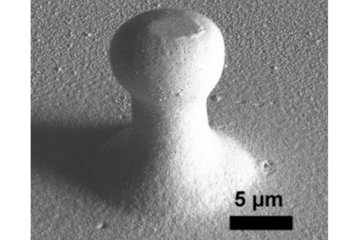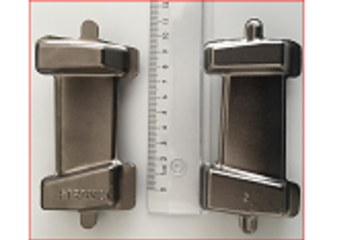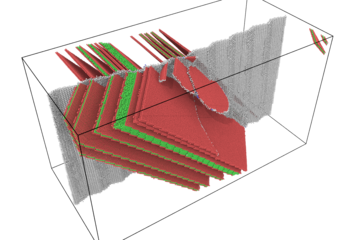All genres
201.
Talk
Insights into dislocation grain-boundary interaction by X-ray µLaue diffraction. Dislocations 2016, West Lafayette, IN, USA (2016)
202.
Talk
Slip transfer through coherent Sigma 3 (111) twin boundaries loaded in different crystallographic direction: Insights by Laue microdiffraction. Materials Science and Engineering Conference, Highlight Lecture, Darmstadt, Germany (2016)
203.
Talk
Synchrotron based µLaue diffraction to probe plasticity at interfaces. IRSP 2016, 14th International Conference Reliability and Stress-Related Phenomena in Nanoelectronics – Experiment and Simulation
, Dresden, Germany (2016)
204.
Talk
Are Mo2BC nanocrystalline coatings damage resistant? Insights from comperative tension experiments. 62. Metallkunde-Kolloquium, Werkstoffforschung für Wirtschaft und Gesellschaft , Lech am Arlberg, Austria (2016)
205.
Talk
Dislocation twin boundary interaction and its dependence on loading direction. 62. Metallkunde-Kolloquium, Lech am Arlberg, Austria (2016)
206.
Talk
Dislocation-grain boundary interaction at the micron scale: Insights by in situ Laue microdiffraction. Jung-DGM-Rhein-Ruhr, Aachen, Germany (2016)
207.
Talk
X-ray microdiffraction Laue experiments to understand plasticity at interfaces. 80th Annual Conference of the DPG and DPG Spring Meeting, Regensburg, Germany (2016)
208.
Talk
X-ray µLaue diffraction to understand plasticity at interfaces. DPG Frühjahrstagung 2016, Regensburg, Germany (2016)
209.
Talk
Slip transfer through coherent Σ3 (111) twin boundaries loaded in different crystallographic directions. DGM Arbeitskreis Treffen „Rasterkraftmikroskopie und nanomechanische Methoden"
, Saarland, Germany (2016)
210.
Talk
Micro-scale fracture behavior of Co based metallic glass thin films. 2016 TMS Annual Meeting and Exhibition Symposium: In Operando Nano- and Micro-mechanical Characterization of Materials with Special Emphasis on In Situ Techniques, Nashville, TN, USA (2016)
211.
Talk
A New Method to Study the Composition Dependence of Mechanical Properties of Laves. MRS Fall Meeting 2016, Boston, MA, USA (2016)
212.
Talk
Transformation de phase induite par déformation plastique sévère des aciers perlitiques. XIe Colloque Rayons X & Matière, Grenoble, France (2015)
213.
Talk
Can We Analyze the Full Strain Tensor During a micro-Compression Experiment? A µLaue case study on Germanium. CNRS GDRi mecano: General Meeting
, Marseille, France (2015)
214.
Talk
Deformation-driven phase transition in severely cold-deformation pearlitic steel. General Meeting on the Mechanics of Nano-Objects, Marseille, France (2015)
215.
Talk
Differences in deformation behavior of bicrystalline Cu micropillars containing different grain boundaries. MS&T 2015 (Materials Science and Technology) meeting, symposium entitled "Deformation and Transitions at Grain Boundaries", Columbus, OH, USA (2015)
216.
Talk
Supersaturated ferrite in severely cold-drawn pearlitic steel - X-ray diffraction study. Pearlite Workshop, MPI für Eisenforschung GmbH, Düsseldorf, Germany (2015)
217.
Talk
Micromechanics: More than a mechanical microscope. GLAAD Meeting, Düsseldorf, Germany (2015)
218.
Talk
Small Scale Mechanical Testing and its Impact on Materials' Applications. 14th International Union of Materials Research Societies-International Conference on Advanced Materials - Keynote Lecture, Jeju Island, Korea (2015)
219.
Talk
Global and local fracture properties of interfaces for robust material combinations in power devices. Nanomechanical Testing in Materials Research and Development V, ECI Conferences, Albufeira, Portugal (2015)
220.
Talk
Can We Analyze the Full Strain Tensor During a micro-Compression Experiment? A µLaue case study on Germanium. Size & Strain
, Oxford, UK (2015)











